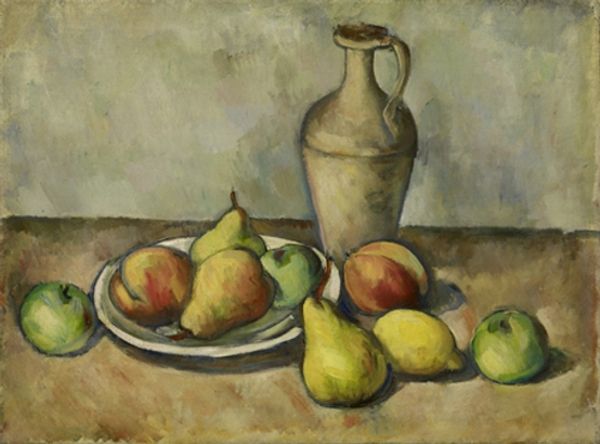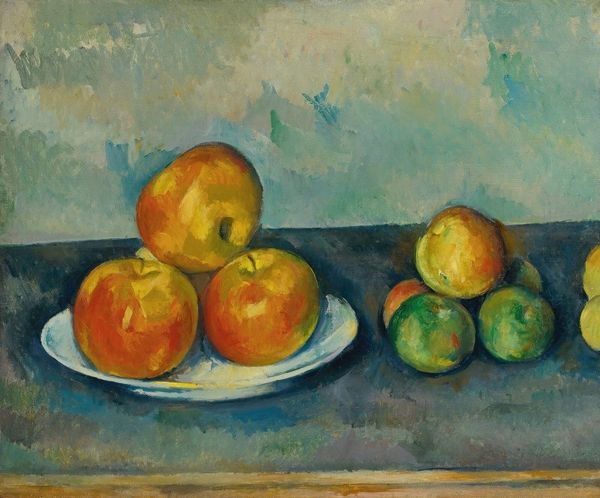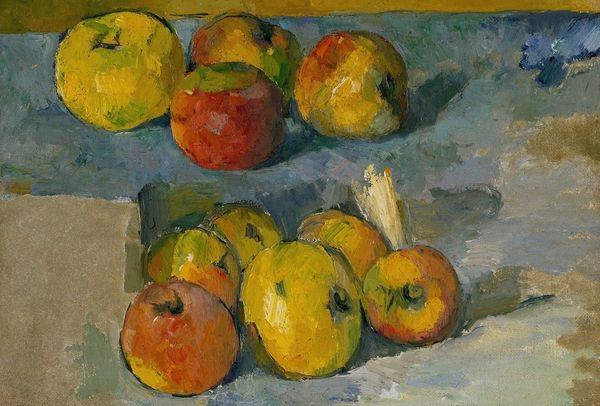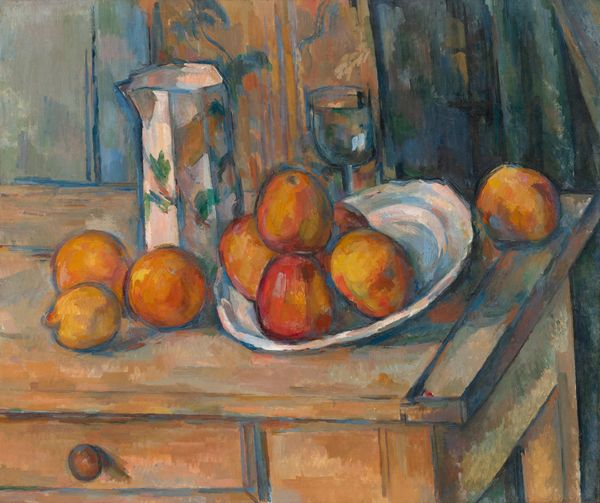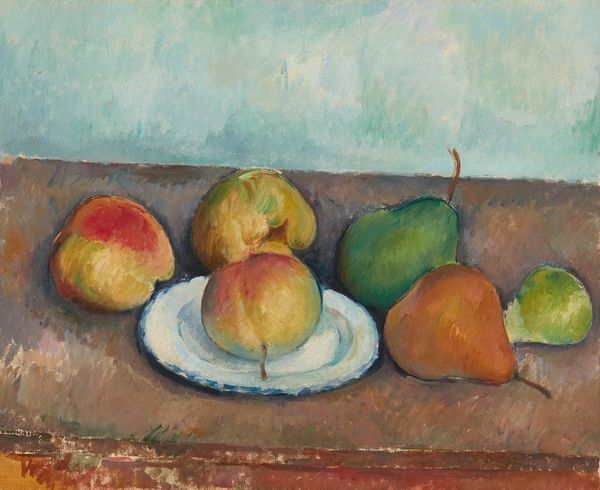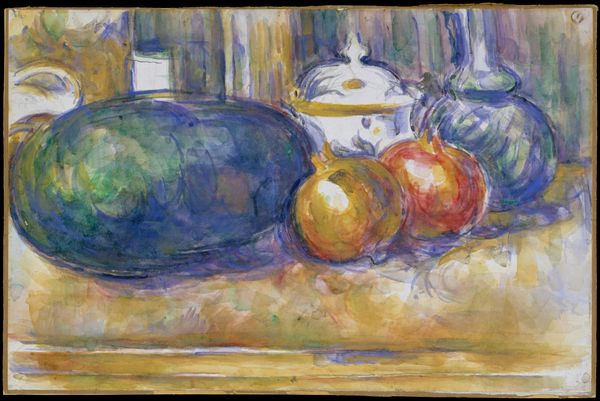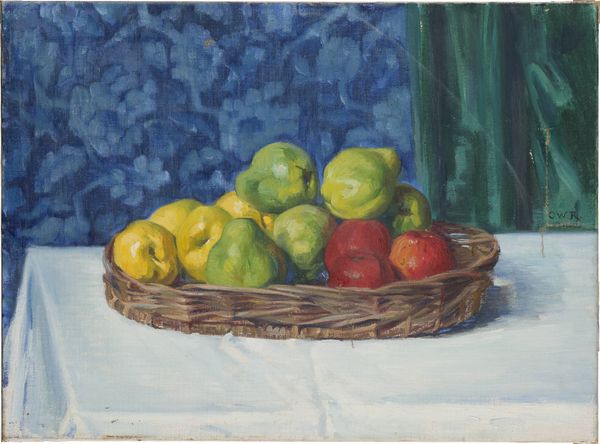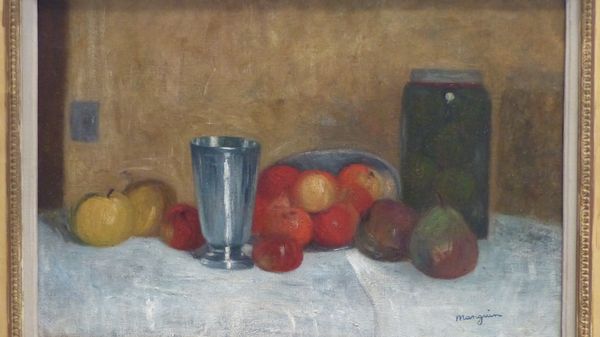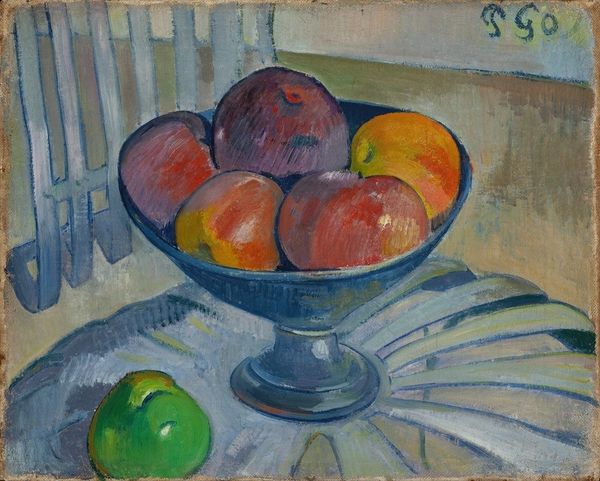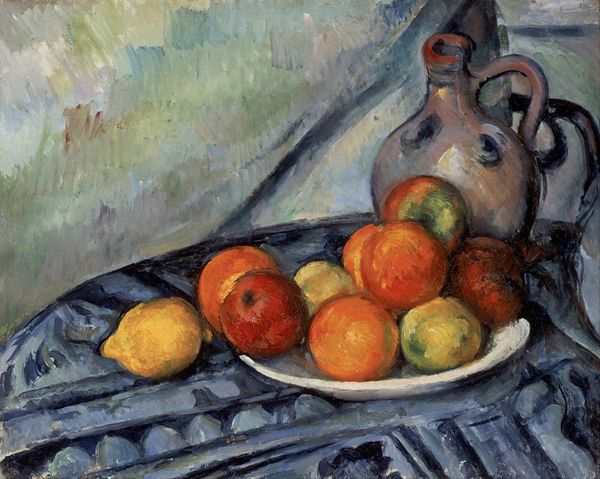
#
abstract painting
#
handmade artwork painting
#
oil painting
#
fluid art
#
acrylic on canvas
#
animal portrait
#
naturalistic tone
#
naive art
#
animal drawing portrait
#
watercolor
Dimensions: 17 5/8 x 23 1/8 in. (44.8 x 58.7 cm)
Copyright: Public Domain
Curator: Welcome. Before us is Paul Cézanne’s "Still Life with Apples and Pears," likely painted between 1891 and 1892. It's a foundational piece in the Met's collection. Editor: My immediate reaction is one of...earthiness. The thick paint application, those slightly clumsy contours. It feels almost brutally honest in its portrayal of these everyday objects. Curator: Exactly! Cézanne revolutionized still life by moving away from idealized representation. He sought a truer depiction of form and space, heavily influencing the development of Cubism and beyond. Think about how galleries previously prioritized grand historical paintings; Cézanne helped elevate humble subjects like fruit. Editor: You see the move away from illusion. I'm caught by his material honesty. Look at the canvas texture showing through! He's revealing the process, the very labor of painting, reminding us that these apples and pears aren’t just illusions. Curator: Absolutely. The seemingly arbitrary perspective – that tilted tabletop – challenged academic norms of representation. How did viewers respond when suddenly, depth was deliberately disrupted? Editor: I imagine they were disturbed! This wasn't about replicating reality but revealing the raw materials – pigment, brushstrokes, canvas – used to construct that reality. Consider how those plates supporting the fruit seem almost like afterthoughts, crude but fundamentally essential to the artwork’s existence. Curator: And the impact is monumental. Cézanne paved the way for future artists to explore abstraction and subjective expression. The way the Metropolitan Museum displayed this work certainly shaped generations of artists and viewers' appreciation for modernist still life. Editor: This work embodies how art is also about labor and presentation. The legacy of artworks relies heavily on galleries as cultural producers. Cézanne made more than a pretty picture— he showed the work, and ultimately, made it OK to show the work. Curator: Reflecting on "Still Life with Apples and Pears," one can understand its importance for democratization of art history itself. Editor: It challenges viewers to actively engage with art's constructed reality rather than passively accepting illusion.
Comments
No comments
Be the first to comment and join the conversation on the ultimate creative platform.
